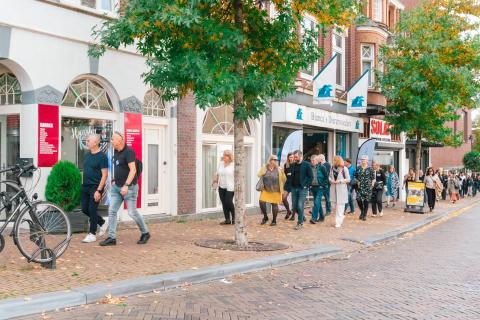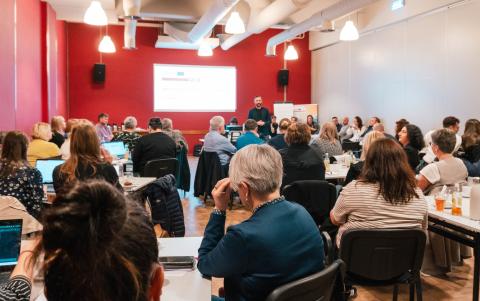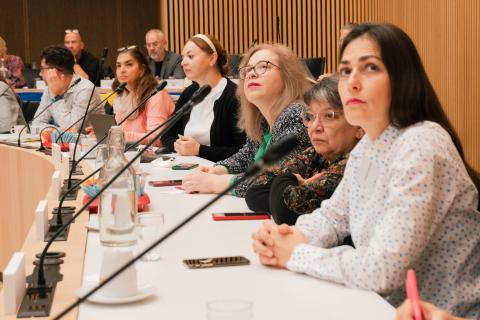Breaking Through in Heerlen
We are on our way to transforming social policies with the most vulnerable groups in our mind. After 1.5 years, the first breakthrough is now in progress: Heerlen has launched a pilot project using insights from the Staircase to Staircase model in Aarhus and the Breakthrough Method, which we learned plenty about during this Study Visit.

The first session provided an overview of the current progress of the pilot project, introduced by Tom Bindels, the leader of the pilot action. There are currently 13 families involved, and the goal is to sustainably improve the living situation of 30 to 40 families. Tom shared the story of one family to give us a closer look at the challenges and the methods used.
Sherley (name changed), who has three children, is currently living with her mother in a one-room apartment after being evicted due to her partner’s involvement in drug-related activities. Her partner is now in jail, and the family cannot apply for social housing due to his criminal record. If the housing company discovers that they are all staying in the grandmother's apartment, they risk another eviction. Sherley is officially homeless, and without intervention, this could become a harsh reality.
This is just one of the many cases the breakthrough team is handling. They have a dedicated team and family coaches working together to tackle such complex situations. But what exactly is the Breakthrough Method?

Many families face overwhelming challenges. They have so many problems that they are on the verge of losing hope and stability. Imagine a father whose wife passed away two years ago. He accumulated debt from failing to open his mail, and although he qualifies for a debt relief program, he was required to sell his car as part of the process. The problem is, his two daughters, who attend a special school, now have to rely on a state-provided taxi service. The changing drivers each day have worsened their mental health conditions, leading to severe symptoms. A child psychiatrist has even recommended placing the girls in a care home. But what if this father could get his car back?
Not only would it resolve many of his immediate problems, but it would also save the social system significant resources. Instead of spending €6000 a year on taxis, a one-time investment of €1200 for his car could make a world of difference. Unfortunately, bureaucracy and laws often prevent families from receiving the help they truly need. Social workers supporting families like this one face constant rejections from institutions with responses such as: "The law doesn’t allow it," "It’s not within our authority," "It’s their own fault," or "We don’t want to set a precedent."
The Breakthrough Method offers ways to break through these barriers of excuses, providing clear arguments and an online tool that helps families create a plan for their future.

The next day, we met the breakthrough team working on the pilot action, and they addressed questions from the partners. Ron Meyer, leader of the Heerlen-Noord program gave us a historical overview of the city, offering valuable insights into the challenges they face today. The team members introduced themselves and explained how they collaborate. We learned more about Sherley’s case: the team worked out an agreement with the housing agency to provide a stable foundation to work towards additional goals. They secured financial assistance to help Sherley make her house a home. They also developed a safety plan and had the family coach visit the father in prison to create a strategy for his release, ensuring a smoother reintegration while keeping the family safe.

In the near future, Heerlen plans to hire one more family coach and seek additional funding to bring on a fourth. The political ambition is to support all 330 families in Heerlen-North. The challenge ahead is how to transition from a project-based approach to a long-term, sustainable model. How can the costs saved by these interventions be reinvested into a long-term solution? These are the key questions Heerlen is tackling in their project.

While we learned about Heerlen’s approach and results, the partnership also had the opportunity to discuss their own plans: whether they too will apply for funding for pilot programs, and how they plan to achieve their goal of changing policies.
